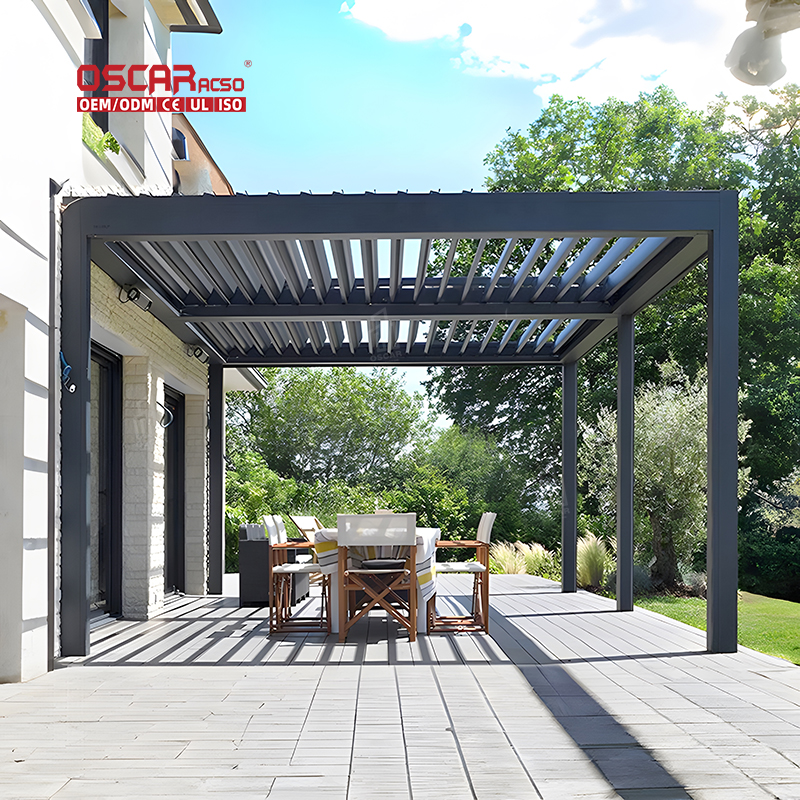Pergola Kit Angle, Unlock the Secret to a Perfectly Pitched Outdoor Retreat
Ever wondered why some pergolas stand strong for decades while others sag or leak within a few seasons? 🤔 The answer oft...

Ever wondered why some pergolas stand strong for decades while others sag or leak within a few seasons? 🤔 The answer often lies in a seemingly small but critically important detail: the angle of the roof or slats. In pergola kits, the angle isn’t just about aesthetics; it’s the backbone of functionality, affecting drainage, shade control, and overall durability. Getting this right transforms your structure from a simple shade provider into a year-round outdoor living space. ☀️🌧️

✨ Why the Angle Matters More Than You Think
The primary role of the angle in a pergola kit is to manage water runoff and weight distribution. A slight pitch, often between 5 to 15 degrees, ensures that rainwater and debris slide off easily instead of pooling on top, which can lead to rot, mold, or even structural damage over time. But it’s not just about practicality—the angle also influences how sunlight filters through. A steeper pitch might create more dramatic shadows and better ventilation, while a flatter angle offers a modern, minimalist look. 🔍
.jpg)
🏗️ Exploring Common Angle Types in Kits
.jpg)
Pergola kits typically come with options for angle configurations, each serving different needs:

- •
Fixed Angle Kits: These are pre-set with a specific pitch, usually optimized for efficient drainage and easy assembly. They’re ideal for DIY enthusiasts who want a straightforward, no-fuss installation.
- •
Adjustable Angle Systems: For those who love flexibility, these kits allow you to change the pitch post-installation. This is perfect if you want to adapt to seasonal changes—steeper in winter for snow shedding, shallower in summer for maximum shade. ❄️🌞
- •
Customizable Brackets: Some high-end kits include brackets that let you set unique angles, catering to unconventional designs or sloped installations. This is where personalization truly shines.
From my experience, adjustable systems, though slightly more expensive, offer the best value long-term. They empower you to respond to weather patterns and usage needs without a complete overhaul.
📋 Key Factors in Choosing the Right Angle
Selecting the perfect angle isn’t a one-size-fits-all decision. You need to consider your local climate—areas with heavy snowfall require a steeper pitch (think 20 degrees or more) to prevent accumulation, while rainy regions benefit from a moderate angle for quick drainage. Also, think about the primary material of your kit; aluminum frames might handle steeper angles better than wood due to their lighter weight and strength. 🏔️
Another often-overlooked factor is aesthetic harmony. How does the pergola angle complement your home’s roofline or garden landscape? A mismatched pitch can look out of place, whereas a cohesive design enhances curb appeal. I always recommend sketching out the plan or using a digital tool to visualize the angle before purchasing.
🔧 Installation Tips and Common Pitfalls
Installing a pergola kit with the correct angle is manageable for a confident DIYer, but attention to detail is key. Always start with a level base—uneven ground can throw off the intended pitch, leading to drainage issues. Use a digital angle finder or a simple bubble level to verify measurements during assembly. If your kit includes adjustable components, test the mechanism multiple times before final tightening to ensure smooth operation. 🛠️
A common mistake I’ve seen is ignoring local building codes. Some municipalities have regulations on structure heights and angles, especially for attached pergolas. Checking these beforehand saves you from costly revisions later. For complex setups, consulting a professional installer might be worth the investment for peace of mind.
💡 My Personal Take on Maximizing Your Pergola’s Potential
In my opinion, the angle is where engineering meets art in outdoor design. While functionality is paramount, don’t underestimate the emotional impact—a well-pitched pergola creates a sense of shelter and openness simultaneously, making your outdoor space feel like an extension of your home. Data from landscape architects shows that structures with optimized angles can last up to 25% longer due to reduced wear from environmental stress. So, investing time in choosing the right pitch isn’t just practical; it’s a smart, long-term upgrade for your lifestyle. 🍹

